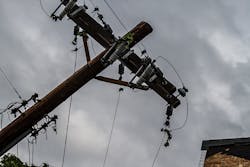6 Dangerous Myths about Electrical Safety
Everyone uses electricity but few people (probably less than 10%) really understand it. This can be dangerous since electricity can kill or injure. Combine electricity’s inherent danger with the myths that surround it, and it becomes a more troubling situation. To improve safety, here are some of the electrical myths debunked, courtesy of several power companies.
Myth 1: Household rubber gloves and rubber-soled shoes are good insulators. Only if they are made of 100% rubber, which none are. To make these gloves and shoes more comfortable and durable, companies mix in additives that make these “rubber” products good conductors rather than insulators.
Myth 2: Wood is a good insulator. Wood is a conductor, not a very good one, but still a conductor. But high-voltage power has no problem moving through wood. And if the wood is damp, it gets transformed into an excellent conductor, even at low voltage. So be careful when using wooden ladders around power lines.
Myth 3: Tires are excellent electrical insulators. Too many TV shows have shown people safely trapped in their cars despite the high-voltage lines dancing and sparking across the car’s body. It’s a tired plot device. The implication is that it’s the rubber tires keeping them insulated and safe. But car tires are electrical conductors, not insulators. It’s also true that you are safe in a car if a live wire falls on it. But that's because electricity always seeks the least-resistant path to the ground. If you stay in the car, the electricity will travel along the outside of the car body, down through the chassis, through the tires, and into the ground. As long as you don’t provide an alternate, less-resistant path to the ground through your body, electricity will not enter it.
Myth 4: All power lines are well insulated. In fact, 90% of outside power lines are bare wires and uninsulated. They may have weather coating, but it provides no insulation or protection from electric shock. Even insulated lines could be unprotected after being exposed to years of weather. So no powerline is completely safe to touch or approach too closely, ever.
Myth 5: When a wire falls to the ground, any power going through gets automatically shut off. In most cases when a wire falls to the ground, it lands on materials that are poor conductors like snow, asphalt, or a brick ledge. When this happens, the power company’s distribution system sees an increased request for electricity, not a broken circuit. Their equipment can’t discern a broken line landing on a poor conductor and increases in demand caused by many people in one area coming home from work and turning on their electrical appliances.
Myth 6: When live wires fall, they make sparks. Power lines will spark if they fall to the ground and don’t make firm contact with the ground or other conductive material. But wires that fall to the ground and make firm contact will often make no noise or sparks. It will look like a a dead wire or one that has been safely de-energized.
About the Author
Stephen Mraz Blog
Senior Editor
Steve serves as Senior Editor of Machine Design. He has 23 years of service and has a B.S. Biomedical Engineering from CWRU. Steve was a E-2C Hawkeye Naval Flight Officer in the U.S. Navy. He is currently responsible for areas such as aerospace, defense, and medical.
